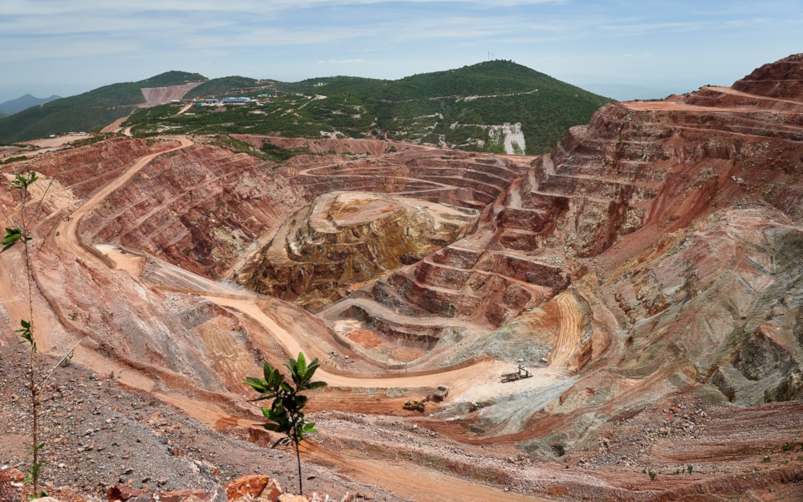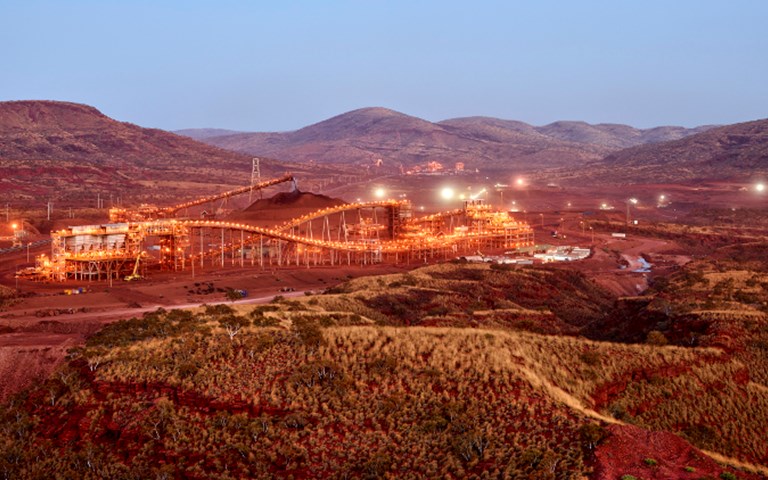Fortescue Metals' Solomon iron ore processing facility in Western Australia is seen in this file photo. More high-quality, low-cost iron ore is expected to come onto the market from Australia and Brazil this year. Courtesy of Fortescue Metals
In 2019, the commodities markets will be watching China to a singular degree. “With virtually any of these commodities, China is consuming 50 per cent of both current and the increase in demand,” said Rory Johnston, a commodity economist at Scotiabank. “And they can change on a dime.” Questions linger over whether China will introduce a stimulus in the form of big infrastructure projects (as the country has in years past), but Johnston predicts that China’s 2019 stimulus will be geared more towards consumer and new industry sectors than traditional heavy construction – in other words, better news for oil than for metals.
The metal Johnston has his eye on this year is copper, known as the bellwether for the entire industry. While prices are forecast to rise to around US$3 per pound, Johnston said he believes they should be higher in order to incentivize investment in new mines, which take years to come online. “The main thing holding copper back is macroeconomic factors, including concerns about growth, concerns about the Chinese trade war, and concerns about the slowdown in Beijing,” he said. “It’s uniquely vulnerable to sentiment swings because of its role in the modern economy. So markets will be watching over the next year to see if current bearish macro sentiment unwinds.”
Aluminum is yet another commodity that depends heavily on China. “It’s a long-term structural story,” said Johnston. That structure is this: A supply deficit outside of China and a supply surplus inside China, with exports from China balancing things out. But as China embarks on efforts to reduce the output of smelters across the country and introduces new “Blue Sky” environmental initiatives, under pressure to improve air quality, expect higher aluminum prices. Willis Thomas, an analyst with CRU Consulting, also pointed out that two of aluminum’s main drivers in 2018 – the saga of Russia-based Rusal, the world’s second-largest aluminum producer, which recently had U.S. sanctions lifted, and the trade war with its possible armistice – could be history in 2019, but still predicts that pricing will be pinned to macroeconomic factors, such as any changes in the Chinese economy.
Related: Commodities fell short of optimistic predictions in 2018, but metallurgical coal came out on top
According to Johnston, gold projections for 2019 are very similar to projections for 2018 – that is, rising interest rates and a falling dollar should push gold, in the longer term, to US$1,300 per ounce. But it will depend on where and when those two factors cross paths, with predictions that gold will hover around US$1,200 if rates fail to normalize before the dollar starts falling.
Palladium got off to an excellent start in 2019, hitting another record price early in January. “We think it’s going to stay in these ranges because there truly is a deficit in the market, with some scrambling to secure product,” said Jim Gallagher, the president and CEO of North American Palladium. Close to 80 per cent of palladium consumption is in catalytic converters for internal combustion engines. Despite the fact that auto sales in 2018 were flat, Gallagher said the decline in sales of diesel engines paired with tough new emissions standards in both China and the European Union have intensified demand for palladium. “These countries are very serious about pollution abatement and that’s the simple driver here,” he said.
While the biggest driver of nickel prices remains the stainless steel industry, the metal also has a growing application – along with cobalt – in the lithium-ion batteries used to power electric vehicles. Felix Maire, senior renewable and storage analyst for S&P Global Platts, noted that increasing cobalt prices have led manufacturers to replace that metal with nickel, which has been subject to relatively flat pricing – thanks, in part, to an increase in processing facilities in Indonesia.
While demand for iron ore is plateauing, high-quality and low-cost supplies are coming onto the market from Australia and Brazil, the world’s two dominant producers, said Johnston. With China producing high-cost and low-quality iron ore mostly for the domestic market, prices will need to remain low enough – around US$65, according to Johnston – to push Chinese producers out. Another factor in the distortion of the iron ore market is that discounts between higher and lower grade ore have been widening. With the Chinese throttling capacity – in part to correct price deflation after years of overproduction – steel prices have risen steeply in China. “In order to chase those high prices, you want to get the most possible steel out of your smelters with the least possible ore thrown into your blast furnaces,” said Johnston. “The best way to do that is throwing in ore with a higher iron content.” But he also predicts that the market will begin to normalize and, with a global push towards more sustainable, less emissions-intensive processes in the steel industry, producers that are able to pump out high-grade ore will be in a very good position in 2019.



